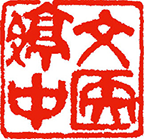Supple and elastic tissues tend to be more resilient to injury, however, force can wound any area of the body. Bones, joints, veins, muscles, tendons, ligaments, and the associated organs of injured parts may fall into a condition of blood stasis, both acutely and chronically, as the body attempts to promote healing. The circulation of blood and Qi at the sites of traumatic injuries becomes impaired, and if left untreated in the immediate phases of trauma care and subsequent rehabilitation, over time can transform into a stubborn and recalcitrant disorder of pain and limitation.
The great news is that in the aftermath of traumatic impact Chinese medicine has acupuncture and Tui Na techniques, and time-tested herbal formulas that work wonders, such as the famous Chinese liniment Zheng Gu Shui, which translates as ‘Bone Correcting Water.’
The Chinese herb constituents in Zheng Gu Shui have the synergistic effect to control bleeding and transform blood stasis, thereby opening portals, and move stagnant Qi, relieve pain, reduce swelling, eliminate bruising, strengthen bone and sinew to help regenerate damaged tissues and bone. This essential formula is for external application only and is not to be applied to open wounds. It has a vast range of trauma applications, from bone fractures and joint dislocations, to sprains and strains. It is invaluable in the clinic and should be part of everyones’ personal medicine cabinet.

Photo by E.C.O.M.A.
Acupuncture should follow wound care and bone setting and be continued, often daily, in the days or week(s) following the initial trauma.

Medicinals can not work to their potential, or at all, if used incorrectly for the particular needs of the condition. Consult your licensed acupuncturist for the appropriate guidelines in applying Zheng Gu Shui.
